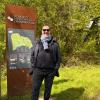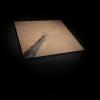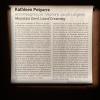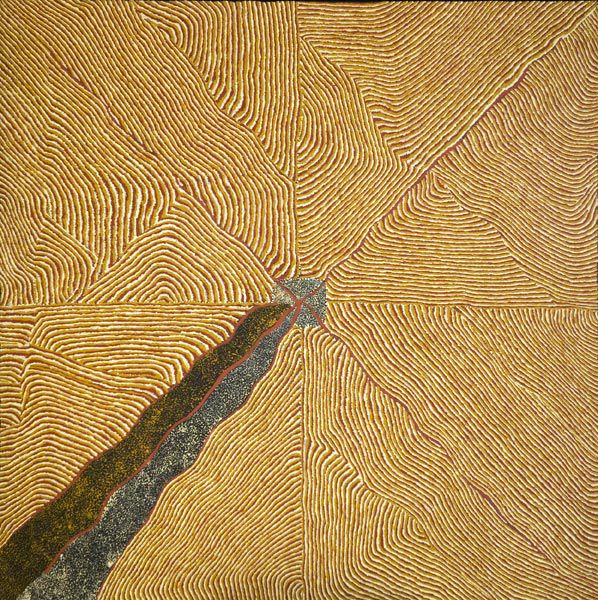Dans l'épaisseur de nos lisières, là où naissent les dragons
HORS LES MURS / Domaine départemental de Chamarande, Essone
15 April - 15 October 2023



Whether through drawing, painting or sculpture, but also through performance, video or textile work, each artist plunges us into a new form of 'territory', one that cannot be enclosed within traditional categories: dream and reality, the lived and the remembered, the sensitive and the intelligible, space and time come together here to form new constellations, brief and unprecedented.
Everything is now territory.
All aspirations and tears, all projected futures and fantasised histories are condensed in it. And everyone - developers, couch grass, beavers, robins, brambles, gardeners, GMOs, politicians, bees, farmers, bark beetles, residents, lawyers, butterflies, landlords, tenants, landscapers, wild boars, zadists, bears, shepherds, wolves, hunters... - seems to have a claim to a 'territory', and often the same one. And while it's true that with it emerges a labyrinth of lands where our imagination likes to wander - the near and the far, the known and the unknown - a territory seems first to be coveted, before offering itself up to reverie and desire.
But perhaps this is inherent in the concept itself, which, since the 16th century, has fragmented space into exclusive and exclusive parcels defended by the arms of their inhabitants; unknown lands are explored and conquered; borders are reproduced on maps and delimited in landscapes. So it's neither trivial nor innocent that the word 'territory' is so popular these days, far beyond its geographical boundaries. Because everything is now a territory - Art, the Intimate, the Self... - and therefore a conflict: the Republic - still the Republic - is fighting the Barbarians - still the Barbarians - over a territory that is as universal as it is abstract. Meanwhile, we deplore the fact that the Machine's territory is encroaching on that of the Human being, who is encroaching on himself and all the others. And they all clash loudly.
But does the territory condemn us to power struggles between pretenders who have become belligerents? Is everything just a matter of defences and attacks, controls and invasions? Or can we question the modern understanding of the concept and adopt new perspectives? To do this, we may first have to sidestep the territory, skirting its contours to redefine it from the intense rustle of its margins. So don't conquer it, but take it with the caution of a child stepping quietly onto the edge, worried and curious at the same time, impatient to flush out the sleeping dragon over there. It's only then that it comes to life: no longer a bleak plain, a stretch of fenced-off areas to be crossed to reach the other side, but a mental landscape taking shape as we travel. It is no longer a passive reservoir of fungible resources, but becomes alive, with its memory and its stories, its uses and its ways of being inhabited. It becomes thicker and thicker, a body in which to lodge. And within it, the intimate, organic link between diverse groups of people is constantly being reactivated.
These territories demand new aesthetics: they need images, forms and materials to imprint themselves on the surface of our retinas and our senses. They require a new cartography, one that is no longer content to be a mere tracing of relationships of domination and exploitation, but one that aims to create new worlds. They are waiting to be drawn, told and embodied. This exhibition is devoted to some of these stories.
Gilles Rion
Head of Exhibitions and FDAC Essonne
Exhibition "DANS L'EPAISSEUR DE NOS LISIÈRES, LÀ OÙ NAISSENT LES DRAGONS" (IN THE THICKNESS OF OUR LANDS, WHERE DRAGONS ARE BORN)
Until 15 October 2023 at the Domaine départemental de Chamarande
38 rue du Commandant Arnoux 91730 CHAMARANDE
Wednesday to Sunday, 9am to 7pm
Kathleen Petyarre, Mountain Devil Lizard Dreaming, acrylic on canvas, 137 x 137 cm, 2010 created as part of an artist residency from 14 to 24 September 2010 at the Abbaye de Daoulas as part of the exhibition "Grand Nord-Grand Sud. Artistes Inuits et Aborigènes" organised by the EPCC Chemins du patrimoine en Finistère (www.cdp29.fr) in co-production with the Musée des Confluences - Département du Rhône. With the kind support of the Australian Embassy in France.
Kathleen Petyarre
Art d'Australie - Stéphane Jacob



